If you remember that a differential signal is really just two single-ended signals that happen to have signals that change in the opposite direction at the same time, it's fairly simple to see what to do.
1) Make sure you have half the differential impedance between the individual traces and the reference plane below. For LVDS that would be 50R trace impedance. Notice that distance to the other trace in the pair as well as other Cu will impact the impedance. Use a 2D field solver to do this (The best free tool I have found is TNT).
2) Make sure you don't have too much crosstalk between any traces (this includes crosstalk between the two traces of that pair, although this is often not much of an issue - see note below).
Yes this may be contradictory advice to what you may read in some app notes, but do your own research in books like the two excellent books on signal integrity by Lee Ritchey (you can legally get the first one "Right the First Time, volume I" as a free or cheap download on the net).
Note on #2: You will (obviously) also have crosstalk between the two
traces of the pair. And at just the point where the signals switch
(both signals switch at the same time). The end result of that is a
degradation of the edge rate.
Now if you follow advice #1 you will have more than plenty spacing
between the two traces that this will normally not be a problem for
your circuit. Actually most often analysis show that this is not a
likely issue. It is just mentioned here for completeness.
Does this help you? I will be happy to expand the answer.

